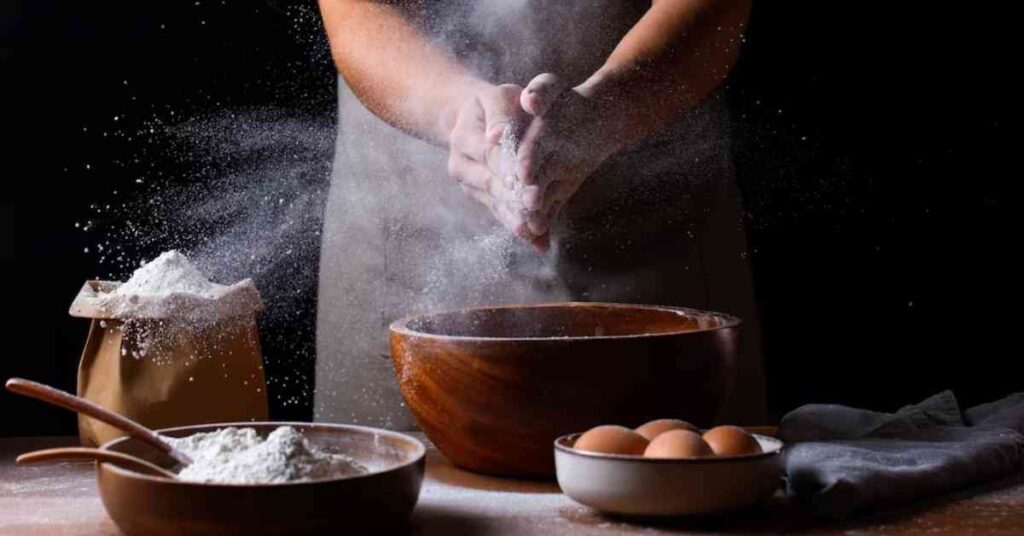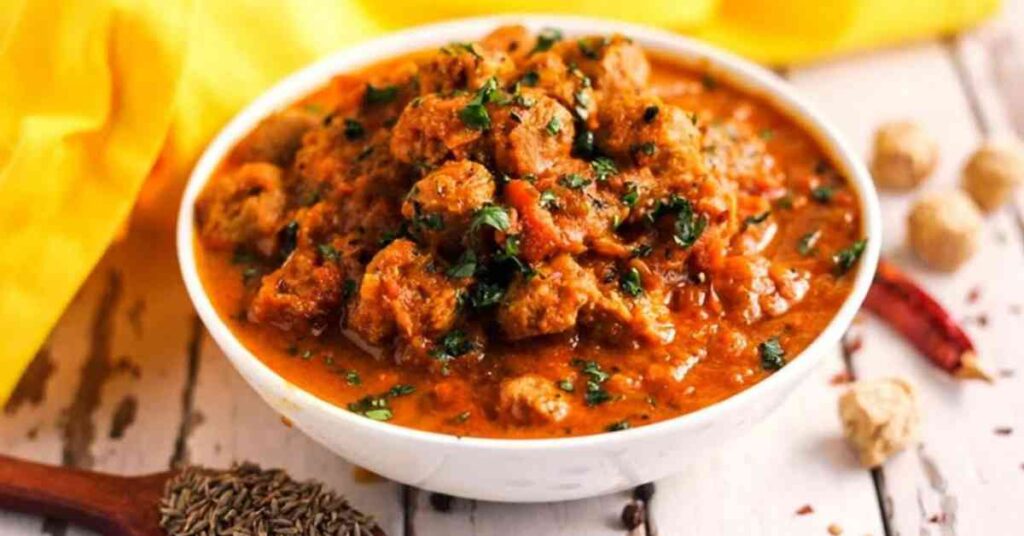Besaras , a culinary marvel cherished across various cultures, represent more than just a dish. These hearty preparations boast a rich history, a blend of diverse ingredients, and a tapestry of flavors that captivate the taste buds. In this article, we embark on a journey to unravel the mystique behind besaras, exploring their origins, regional variations, health benefits, and cultural significance.
History and Origin
Ancient Roots
The roots of besaras trace back to ancient civilizations, where they were revered for their simplicity and nourishing properties. Historians suggest that besaras have been part of culinary traditions for centuries, with mentions in ancient texts and manuscripts.
Cultural Significance
Besaras hold a significant place in the cultural heritage of regions where they are prepared. They are often associated with rituals, celebrations, and familial gatherings, symbolizing unity, abundance, and tradition.
Besaras: A Culinary Journey
Evolution Over Time
The evolution of besara cuisine spans centuries, reflecting changes in culinary practices, cultural influences, and societal developments. From its humble origins as a simple peasant dish to its modern-day status as a beloved culinary icon, besara has undergone significant transformations over time. Here’s a glimpse into the evolution of besara and how it has adapted to changing tastes and preferences throughout history:
- Ancient Roots: Besara traces its origins back to ancient civilizations, where it was a staple food among peasants and commoners. Early besara recipes were simple and rustic, consisting of locally available ingredients such as vegetables, pulses, and spices cooked together in hearty stews or curries.
- Cultural Exchange: As trade routes expanded and cultures interacted, besara cuisine underwent a process of cultural exchange and adaptation. Influences from neighboring regions and distant lands introduced new ingredients, flavors, and cooking techniques to besara recipes, enriching its culinary repertoire and diversifying its flavor profile.
- Colonial Influences: During the colonial era, besara cuisine underwent further evolution with the arrival of European colonizers in regions where besara was traditionally consumed. Colonial influences introduced ingredients such as potatoes, tomatoes, and chilies to besara recipes, transforming them into hybrid dishes that blended indigenous and colonial culinary traditions.
- Urbanization and Modernization: The rise of urbanization and modernization in the 20th century brought about changes in besara cuisine, as urban dwellers adapted traditional recipes to suit their fast-paced lifestyles and changing dietary preferences. Convenience foods, canned ingredients, and ready-made besara mixes became popular, offering quick and easy alternatives to homemade besara dishes.
- Revival of Traditional Cuisine: In recent years, there has been a renewed interest in traditional cuisine and culinary heritage, leading to a revival of besara recipes and cooking techniques. Food enthusiasts and chefs alike are rediscovering the richness and authenticity of besara cuisine, exploring traditional ingredients, and reviving age-old cooking methods to preserve besara’s culinary legacy.
- Innovation and Creativity: Alongside the revival of traditional besara cuisine, there has been a surge in innovation and creativity in besara recipes. Chefs and home cooks experiment with new ingredients, fusion flavors, and contemporary presentation styles, reimagining besara dishes for modern palates while staying true to their cultural roots.
- Globalization and Cross-Cultural Influences: In today’s interconnected world, besara cuisine continues to evolve and adapt to global culinary trends and cross-cultural influences. From besara-inspired fusion dishes served in upscale restaurants to besara-themed food festivals celebrating culinary diversity, besara’s evolution reflects the dynamic interplay of tradition and innovation in contemporary cuisine.
- Sustainable Practices: As awareness of environmental and ethical issues grows, there is a growing emphasis on sustainable practices in besara cuisine. Chefs and food producers prioritize locally sourced ingredients, organic farming methods, and eco-friendly cooking techniques to reduce environmental impact and promote a more sustainable food system.
Through its journey across time and continents, besara cuisine has remained a symbol of resilience, adaptability, and cultural heritage. As it continues to evolve and innovate, besara’s culinary legacy lives on, inspiring generations of food lovers to savor the flavors of the past while embracing the tastes of the future.

Global Influence
While besara dishes have deep roots in regional cuisines, their influence has transcended borders, gaining popularity and recognition on the global culinary stage. From traditional family recipes passed down through generations to innovative adaptations by renowned chefs, besara dishes have made their mark in diverse culinary landscapes around the world. Here’s how besara’s global influence has shaped culinary experiences and inspired a fusion of flavors:
- Culinary Fusion: Besara’s versatile nature and rich flavors have inspired culinary fusion, where traditional besara ingredients and cooking techniques are combined with ingredients from other cuisines to create innovative and eclectic dishes. From besara-inspired pasta dishes to fusion besara tacos, chefs around the world are incorporating besara elements into their culinary creations, resulting in unique and exciting flavor combinations.
- Restaurant Offerings: Many restaurants globally feature besara dishes on their menus, catering to a diverse clientele seeking authentic and adventurous dining experiences. Whether it’s upscale eateries serving gourmet besara platters or casual cafes offering besara-inspired street food, besara dishes have become a staple in global dining establishments, appealing to food enthusiasts of all backgrounds.
- Cultural Exchange: Besara’s global influence fosters cultural exchange and appreciation, allowing people from different backgrounds to connect through food. As besara dishes travel across borders and continents, they serve as a bridge between cultures, sparking conversations, sharing traditions, and celebrating culinary diversity.
- Cooking Workshops and Classes: Cooking workshops and classes focused on besara cuisine provide opportunities for culinary enthusiasts to learn about besara’s history, ingredients, and preparation techniques. Whether it’s a hands-on cooking class led by a seasoned chef or a virtual cooking workshop conducted by besara experts, these culinary experiences offer insights into besara’s global influence and its role in contemporary cuisine.
- Online Communities: Online communities dedicated to besara cuisine provide platforms for food lovers to share recipes, cooking tips, and cultural insights. Through social media platforms, blogs, and forums, enthusiasts from around the world connect with like-minded individuals, exchange culinary ideas, and showcase their besara creations, further amplifying besara’s global influence and reach.
- Culinary Tourism: Besara’s global influence extends to culinary tourism, where travelers seek out authentic besara experiences during their journeys. Whether it’s exploring bustling food markets in India, attending besara cooking classes in Egypt, or dining at besara-themed restaurants in Europe, culinary travelers immerse themselves in besara’s flavors and cultural significance, enriching their travel experiences and creating lasting memories.
- Recipe Adaptations: Home cooks worldwide experiment with besara recipes, adapting them to suit their tastes and ingredients available in their local markets. From substituting regional vegetables and spices to incorporating besara elements into traditional dishes, home cooks infuse their culinary repertoire with besara’s global influence, adding a touch of authenticity and creativity to their meals.
- Culinary Events and Festivals: Culinary events and festivals celebrating besara cuisine showcase its global influence and appeal. Whether it’s a besara food festival featuring a diverse array of besara dishes from around the world or a besara-themed cooking competition highlighting innovative besara recipes, these events bring together chefs, food enthusiasts, and cultural ambassadors to celebrate besara’s culinary heritage and global reach.
By embracing besara’s global influence, culinary enthusiasts and food lovers celebrate the rich tapestry of flavors, traditions, and cultural connections that besara brings to the table. Whether enjoying a traditional besara feast or savoring a fusion besara creation, the global influence of besara cuisine continues to inspire and delight taste buds around the world.

Exploring Besara in Home Cooking
DIY Recipes
Embark on a culinary adventure in your own kitchen with these delightful besara DIY recipes. Whether you’re a seasoned cook or a novice in the kitchen, these step-by-step recipes will guide you through the process of creating flavorful besara dishes from scratch. Gather your ingredients, roll up your sleeves, and let’s get cooking!
1. Besara Curry
Ingredients:
- 2 cups mixed vegetables (such as potatoes, eggplant, okra, and pumpkin), diced
- 1 cup pigeon peas (toor dal), soaked and boiled
- 1 onion, finely chopped
- 2 tomatoes, diced
- 3 garlic cloves, minced
- 1-inch piece of ginger, grated
- 2 green chilies, slit
- 1 teaspoon mustard seeds
- 1 teaspoon cumin seeds
- 1/2 teaspoon turmeric powder
- 1 teaspoon coriander powder
- 1/2 teaspoon red chili powder
- Salt to taste
- Fresh coriander leaves for garnish
- 2 tablespoons cooking oil

Instructions:
- Heat oil in a pan and add mustard seeds and cumin seeds. Allow them to splutter.
- Add chopped onions, minced garlic, grated ginger, and slit green chilies. Sauté until onions turn translucent.
- Add diced tomatoes and cook until they soften and turn mushy.
- Add turmeric powder, coriander powder, red chili powder, and salt. Mix well and cook for a minute.
- Add diced vegetables and boiled pigeon peas. Mix everything together.
- Add water as needed to achieve your desired consistency. Cover and simmer until the vegetables are tender.
- Once the vegetables are cooked, garnish with fresh coriander leaves.
- Serve hot with steamed rice or chapati.
2. Besara Fish
Ingredients:
- 4 fish fillets (such as tilapia or cod)
- 1 onion, finely chopped
- 2 tomatoes, diced
- 3 garlic cloves, minced
- 1-inch piece of ginger, grated
- 2 green chilies, slit
- 1 teaspoon mustard seeds
- 1 teaspoon cumin seeds
- 1/2 teaspoon turmeric powder
- 1 teaspoon coriander powder
- 1/2 teaspoon red chili powder
- Salt to taste
- Fresh coriander leaves for garnish
- 2 tablespoons cooking oil

Instructions:
- Heat oil in a pan and add mustard seeds and cumin seeds. Allow them to splutter.
- Add chopped onions, minced garlic, grated ginger, and slit green chilies. Sauté until onions turn translucent.
- Add diced tomatoes and cook until they soften and turn mushy.
- Add turmeric powder, coriander powder, red chili powder, and salt. Mix well and cook for a minute.
- Place fish fillets in the pan and spoon the besara sauce over them.
- Cover and cook on low heat until the fish is cooked through and flakes easily with a fork.
- Once the fish is cooked, garnish with fresh coriander leaves.
- Serve hot with steamed rice or crusty bread.
Enjoy the satisfaction of creating delicious besara dishes from scratch in your own kitchen with these easy-to-follow DIY recipes!
Family Traditions
Besara dishes hold a special place in many families, often being passed down through generations as cherished recipes and culinary traditions. Whether it’s a treasured family recipe for besara curry or a time-honored cooking method handed down from grandparents, these traditions enrich the culinary heritage of families and create lasting memories. Here are some ways to embrace besara family traditions and make them a meaningful part of your culinary journey:
- Recipe Sharing: Preserve family besara recipes by sharing them with loved ones and passing them down to future generations. Gather family members for a cooking session where everyone can participate in preparing a traditional besara dish together, sharing stories and techniques along the way.
- Generational Wisdom: Tap into the wisdom of older family members who have mastered the art of besara cooking. Learn from their experiences, techniques, and secret ingredients that make their besara dishes truly special. Take notes, ask questions, and embrace the opportunity to cook alongside your elders, keeping family traditions alive.
- Special Occasions: Make besara dishes a centerpiece of special occasions and family gatherings. Whether it’s a holiday celebration, birthday party, or Sunday family dinner, incorporate besara recipes into the menu to honor tradition and create a sense of connection with your culinary heritage.
- Adaptation and Innovation: While honoring traditional besara recipes, don’t be afraid to adapt and innovate based on your family’s tastes and preferences. Experiment with new ingredients, cooking techniques, and flavor combinations to put your own twist on classic besara dishes while still honoring the essence of family tradition.
- Storytelling Through Food: Use besara dishes as a vehicle for storytelling, sharing anecdotes, and recounting family memories. As you cook and enjoy besara together, share stories about the origins of the recipe, memorable family gatherings, and the role of besara in shaping your family’s culinary legacy.
- Teaching the Next Generation: Pass on besara cooking skills to the next generation by involving children and grandchildren in the kitchen. Encourage them to participate in age-appropriate tasks such as washing vegetables, stirring the pot, or rolling out dough, instilling a love for cooking and family traditions from a young age.
- Preserving Heritage: Besara dishes are not just about food; they are a reflection of cultural heritage and identity. By preserving and celebrating besara family traditions, you honor your cultural roots and ensure that future generations continue to appreciate and embrace the culinary heritage passed down through your family.
- Creating New Traditions: While honoring the past, create new besara traditions that reflect your family’s unique identity and values. Whether it’s starting a new besara recipe tradition for annual family gatherings or incorporating besara into cultural celebrations, forge connections between past, present, and future through shared culinary experiences.
By embracing besara family traditions, you strengthen bonds, foster intergenerational connections, and create a sense of belonging rooted in shared culinary heritage. Whether cooking alongside loved ones or savoring besara dishes steeped in family history, cherish the moments spent together and the traditions that enrich your culinary journey.
Sustainability and Besara
Eco-friendly Practices
Embracing eco-friendly practices in besara cooking not only promotes sustainability but also contributes to a healthier planet. Here are some ways to incorporate eco-conscious habits into your besara preparation:
- Source Locally: Choose locally sourced ingredients whenever possible. By supporting local farmers and producers, you reduce the carbon footprint associated with transportation and promote regional agriculture.
- Seasonal Ingredients: Use seasonal vegetables and herbs in your besara recipes. Seasonal produce tends to be fresher, tastier, and more environmentally friendly, as it requires less energy for cultivation and transportation.
- Reduce Food Waste: Minimize food waste by using all parts of the vegetables, including stems, peels, and leaves, in your besara dishes. You can repurpose vegetable scraps for homemade stocks or compost them to enrich soil fertility.
- Opt for Organic: Whenever feasible, opt for organic ingredients in your besara cooking. Organic farming practices prioritize soil health, biodiversity, and natural resource conservation, resulting in healthier ecosystems and reduced chemical pollution.
- Water Conservation: Practice water conservation by using efficient cooking methods and minimizing water usage during food preparation. Reuse cooking water for other culinary purposes or watering plants to reduce wastage.
- Energy-efficient Cooking: Choose energy-efficient cooking appliances and methods, such as induction cooktops or pressure cookers, to minimize energy consumption. Cook besara dishes at lower temperatures for longer durations to conserve energy while preserving flavors.
- Reusable Utensils and Cookware: Opt for reusable utensils, cookware, and containers made from sustainable materials such as bamboo, stainless steel, or glass. Avoid single-use plastics and disposable kitchen items to reduce plastic pollution.
- Composting: Dispose of organic kitchen waste through composting rather than sending it to landfills. Composting enriches soil quality, reduces methane emissions, and closes the nutrient loop in the ecosystem.
- Mindful Portions: Prepare besara dishes in moderate portions to avoid food wastage. Freeze leftovers for future meals or share them with neighbors, friends, or local community organizations to minimize excess food disposal.
- Educate and Advocate: Spread awareness about eco-friendly cooking practices and advocate for sustainable food systems within your community. Encourage others to adopt environmentally conscious habits and support initiatives that promote sustainable agriculture and culinary practices.
By incorporating these eco-friendly practices into your besara cooking routine, you can enjoy delicious meals while contributing to a greener, more sustainable future for generations to come.
Locally Sourced Ingredients
Choosing locally sourced ingredients for your besara dishes not only supports local farmers and businesses but also offers numerous benefits for the environment and your community. Here’s why sourcing locally is beneficial and how you can incorporate locally sourced ingredients into your besara recipes:
- Freshness and Flavor: Locally sourced ingredients are often fresher and more flavorful than those that have traveled long distances. By purchasing vegetables, herbs, and other ingredients from local farmers’ markets or farm stands, you can enjoy produce at its peak ripeness and taste.
- Seasonal Variety: Local produce reflects the seasonal diversity of your region, offering a wide array of fruits, vegetables, and herbs throughout the year. Embrace seasonal variety by incorporating seasonal ingredients into your besara dishes, adapting recipes to highlight the flavors of each season.
- Support for Local Economy: Buying locally supports the local economy by keeping money circulating within the community. When you purchase ingredients directly from local farmers or food producers, you help sustain small-scale agriculture and contribute to the livelihoods of local families and businesses.
- Reduced Carbon Footprint: Locally sourced ingredients travel shorter distances from farm to table, reducing carbon emissions associated with transportation. By choosing locally grown produce, you help minimize the environmental impact of your food choices and support sustainable agriculture practices.
- Connection to Food Sources: Sourcing locally allows you to establish a closer connection to the sources of your food. Visit local farms, participate in community-supported agriculture (CSA) programs, or engage with farmers at farmers’ markets to learn about how your food is grown and harvested.
- Promotion of Biodiversity: Supporting local farmers who practice diverse, sustainable farming methods promotes biodiversity and preserves traditional crop varieties. Celebrate the rich biodiversity of your region by exploring heirloom vegetables, indigenous herbs, and lesser-known ingredients in your besara recipes.
- Community Engagement: Engage with your local food community by attending farm-to-table events, cooking workshops, or community gardening initiatives. Connect with like-minded individuals who share your passion for sustainable, locally sourced food and exchange ideas for incorporating local ingredients into your cooking.
- Ethical Considerations: Choosing locally sourced ingredients aligns with ethical considerations such as fair labor practices, animal welfare, and environmental stewardship. Seek out farmers and food producers who prioritize sustainable, ethical farming practices and transparency in their operations.
By prioritizing locally sourced ingredients in your besara cooking, you not only elevate the flavor and freshness of your dishes but also contribute to a more sustainable and resilient food system in your community. Celebrate the abundance of local ingredients available in your region and savor the unique flavors of your local terroir in every bite of your besara creations
Conclusion
Besaras embody the essence of culinary diversity, uniting flavors, traditions, and communities in a single dish. Whether enjoyed as a comforting home-cooked meal or savored at a fine dining establishment, besaras continue to captivate food enthusiasts worldwide with their timeless appeal and gastronomic excellence.
FAQs (Frequently Asked Questions)
Are besaras suitable for vegetarians and vegans?
Yes, besaras are generally suitable for vegetarians and vegans as they are primarily made from plant-based ingredients such as vegetables, pulses, and spices.
Can I customize besara recipes to suit my dietary preferences?
Absolutely! Besara recipes are quite versatile, and you can easily customize them to suit your dietary preferences. You can adjust the ingredients, spices, and cooking methods according to your taste and dietary requirements.
What are some common substitutes for ingredients in besara recipes?
Some common substitutes for ingredients in besara recipes include using tofu or tempeh instead of meat for protein, coconut milk as a substitute for dairy cream, and vegetable broth as a substitute for meat broth.
How long can besara dishes be stored in the refrigerator?
Besara dishes can typically be stored in the refrigerator for 2-3 days if stored properly in an airtight container. It’s essential to cool the dish completely before refrigerating and to reheat it thoroughly before serving.
Are there any besara recipes suitable for special dietary requirements, such as gluten-free or low-carb diets?
Yes, there are plenty of besara recipes that can be adapted to suit special dietary requirements. For gluten-free diets, ensure that all ingredients used are certified gluten-free, and for low-carb diets, you can reduce or eliminate high-carb ingredients such as potatoes and use alternatives like cauliflower or zucchini.




